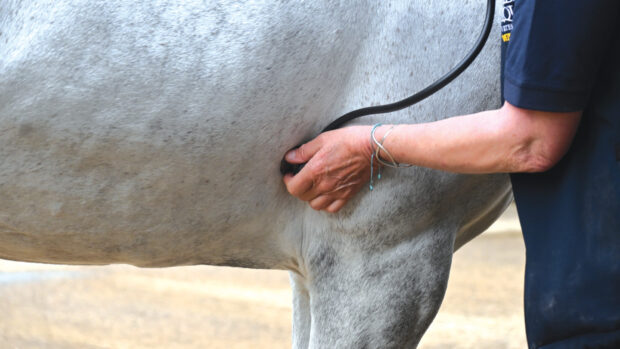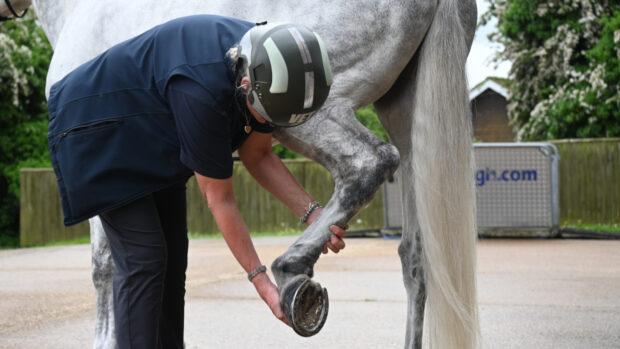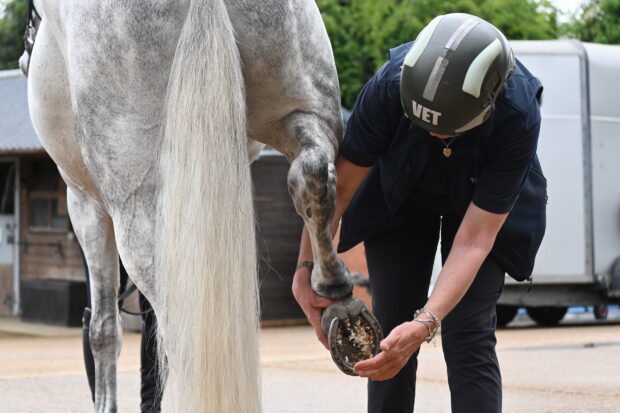The continuing increase of the number of corporate-owned equine vet practices has led to discussions across the industry.
As more practices become owned by corporate companies, H&H has spoken to people involved in the profession to find out what this means for owners and vets and to discuss the biggest challenges facing the industry. This includes the ongoing vet shortage and the high number of vets who leave equine practice often around five years after graduating.
A recent talking point was the closure of Chiltern Equine on 9 February. IVC bought the practice in November 2021 with seven others, but following an investigation by the Competition and Markets Authority (a non-ministerial government department that looks at whether mergers have the potential to lead to a substantial lessening of competition), Chiltern Equine became independent again when it was sold to Nick Park in June 2023.
Chiltern Equine’s founder Sarah Randall remained with the practice until she was made redundant last month.
Dr Randall has set up Elite Equine Clinic and told H&H it is “really difficult” for practice owners to find independent buyers.
“Historically, older vets would have an exit plan – bring up and develop assistants through the practice, who would buy their share when they retired. That structure has disappeared due to the changing face of the profession, so I think older partners don’t really have any choice than to sell to corporates,” she said, adding that during the short spell under IVC, nothing changed at Chiltern in terms of the day-to-day running of the practice.
“In theory, corporates should bring a lot of value in terms of smart hospitals and new equipment, but it’s making sure vets are making the decisions.”
The rise of corporate-owned practices sometimes raises concerns among owners about rising bills, not seeing the same vet and the decline in choice when many practices are owned by the same company. When asked whether the increase in corporate practices could be an issue, Dr Randall said she believes the main problem is for the younger generation of vets.
“I think a lot of them feel they don’t have a future, whereas with the old system where you establish yourself in a practice and become a partner, there was a bit more career progression, I would imagine,” she said.
Equine vet and IVC south-east regional equine head Graham Hunter, a former partner of an independent practice that sold to a corporate, agreed that many practice sales come down to succession challenges. But he added that “what was a well-run practice prior to being sold is probably still a well-run practice, with minimal turnover of staff.”
Dr Hunter said the biggest pressure on the industry is the ongoing vet shortage, which is driving costs up.
“Because there is a shortage, there are higher demands for wages, so everything racks up. And that unfortunately means the horse owner is generally faced with higher bills than they have been,” he said.
Ricky Farr, joint owner of Farr & Pursey Equine in Hertfordshire, told H&H that being an independent practice means they have been able to build up good relationships with clients.
“I think you can still do that in corporate practice, but from our point of view with corporate practice, you lose that autonomy, both clinically and financially, to make decisions kind of on the fly,” he said.
“People are worried about money, and I think you need that degree of flexibility from the veterinary side to tweak things a little on the financial – or the pharmaceutical – side to work with clients, and within your own business as well. We can say, ‘This is how much it costs, this is what we can do and this is what we’d like to do. Let’s find what works for you and what works for us.’
“We’ve had clients come to us from corporates and it seems to be the same story where they don’t see the same vets. Or it might be they are asked to bring their horse into the practice and then come out with rather large bills. I’m not saying things are done unnecessarily, but there seems to be a lack of communication.”
Dr Farr added that it is “a big challenge” being surrounded by corporate practices.
“We’re having to change little things on a weekly basis to make sure we keep up,” he said.
“They have the latest equipment, which is what patients need, but sometimes it’s quite difficult as an independent to suddenly find £150,000 to buy a new X-ray machine.
“It takes time to build up that financial reserve to invest, and we do regularly do this, but when you suddenly have a corporate round the corner saying, ‘We’re going to offer this package,’ it means they can bring clients in incredibly quickly.”
In response to concerns that corporate vets are more restricted in clinical decisions than independents, Dr Hunter said vets in corporate practices have “absolute clinical freedom to do the right thing for the right case”.
“Corporates aren’t coming in and saying you must do X, Y and Z, but they have management people to make processes more efficient and look at things such as debt. Equine practice carries a huge level of debt which no other industry would allow,” he said, adding that corporates invest heavily into practices and equipment, continuous professional development and upskilling.
“Practices also have freedom to a degree on what they bill for and pricing structure. We have guidelines on pricing structures, but it’s up to the practices whether they sit in the bottom or top quartile of that pricing. There is an encouragement to price fairly and that doesn’t mean aggressively,” he said.
He added that one other major challenge is that generally the amount of vet fees covered by insurance has not increased over the years.
“When you insured your horse 20 years ago, the maximum paid in vet fees was £5,000; today, it’s still usually around £5,000. That puts even more pressure on us to try and keep the charges low, which gets difficult when all the costs are going up.”
Lucy Grieve, the British Equine Veterinary Association’s veterinary projects officer, said the industry has undergone changes, including “feminisation”, with an increase in females coming into the profession and rising student debt putting people off doing long degrees like vet medicine.
“Also, society has been placing more and more importance on work-life balance, which has highlighted the difficulties associated with managing life outside of work alongside vocational careers,” she said.
“In relation to much of this, we have seen sobering statistics on high rates of suicide and divorce within the veterinary profession, which is a pretty clear indication that we have not been getting things right. As such, it is perhaps therefore not surprising that large numbers of people have been leaving clinical practice within eight years of qualifying.”
Ms Grieve said “the industry had to change, and has done, with corporatisation being the first big change – but it is unlikely to be the last”.
“As corporatisation peaked, we started seeing so-called ‘phoenix practices’ [vets setting up alone] and more recently, employee ownership trusts. It would be easy to imagine that with a wider variety of business models, there will be more opportunities for individuals with individual preferences to thrive in veterinary practice, therefore a happier workforce and a better service to our clients.”
Vet Adele Ronchetti set up ambulatory practice AR Equine 18 months ago, when her former employer was reaching retirement.
“Because we’re a small team, it’s more like a family practice and we like to really get to know our clients and their horses,” she said.
“We make ends meet as a business, but we’re certainly not doing it to make a massive profit. We treat the horses first, and then business almost comes second, which is maybe the wrong way to do it, but it works for us.”
Lingfield Equine Vets recently transferred into an employee ownership trust (EOT). This means the three original shareholders and founders – George Christopherson, Rachel Atherton and Kate Granshaw – sold their shares into a beneficial trust and the beneficiaries of this trust are the employees of Lingfield. Although this model has been seen in small animal practices, Lingfield is believed to be the first equine practice to become an EOT.
“When an EOT is created, generally the founders take no money, or very little, out of the business. On the balance sheet, there is an agreement of how much money is owed to the shareholders, and the business continues to trade as usual. Then in the future, the business’s profit repays the shareholders for their shares. After this, the future profit is distributed among employees,” Lingfield director Mr Christopherson told H&H.
It’s because of this model that Mr Christopherson believes that Lingfield Equine Vets “should be able to offer some of the best salaries in the industry”. He added that he and the other founders “never felt comfortable with the idea of selling to a corporate giant, so becoming an EOT felt like the perfect solution”.
But Mr Christopherson believes the biggest concern to the industry is not the rise in corporate-owned vet practices, but the vet shortage – which he said is driving wage bills up and in turn veterinary fees. But he adds that vets were underpaid previously compared to dentists and GPs.
“Vet fees are also partly driven by the client, in terms of they want better and better service, which drives us to deliver it – but it comes with higher and higher costs,” he said.
You might also be interested in:

Subscribe to Horse & Hound magazine today – and enjoy unlimited website access all year round

New research reveals most common findings in pre-purchase horse vettings

Calls to seek vet advice after owner prosecuted for treating horse with coconut oil
Horse & Hound magazine, out every Thursday, is packed with all the latest news and reports, as well as interviews, specials, nostalgia, vet and training advice. Find how you can enjoy the magazine delivered to your door every week, plus options to upgrade your subscription to access our online service that brings you breaking news and reports as well as other benefits.




